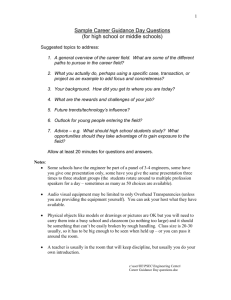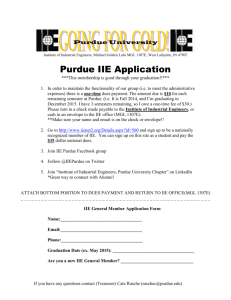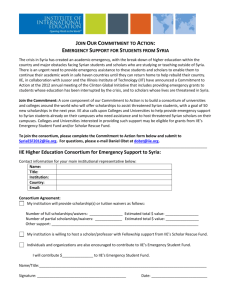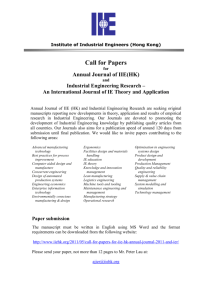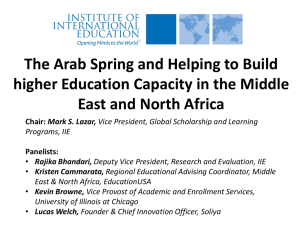excerpt
advertisement
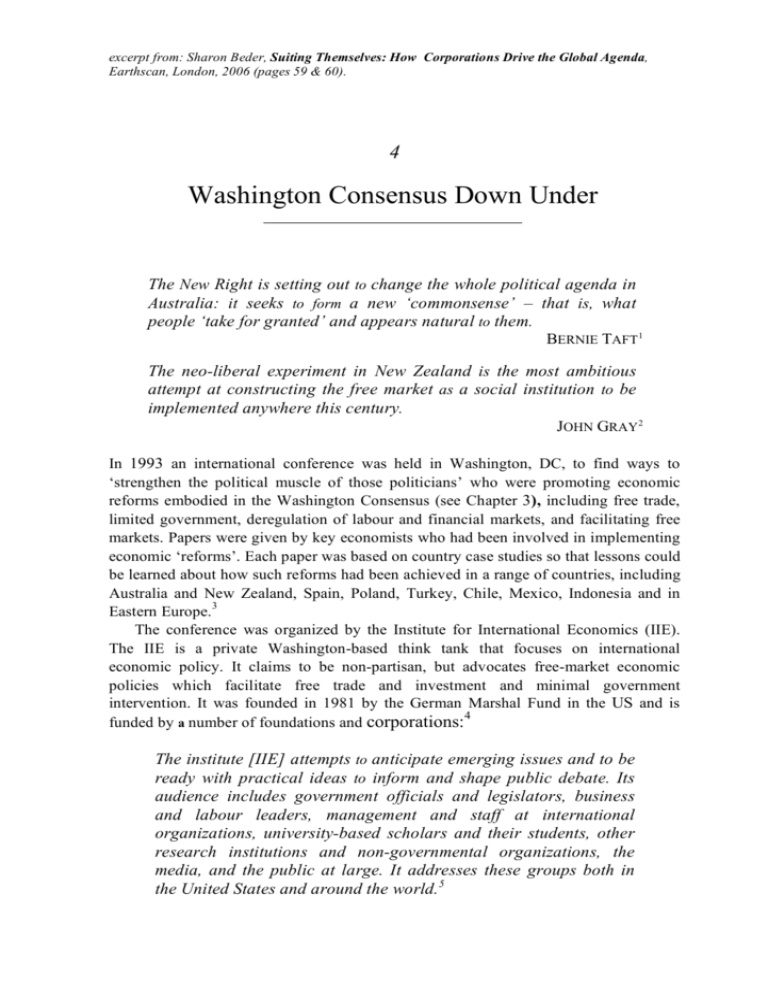
excerpt from: Sharon Beder, Suiting Themselves: How Corporations Drive the Global Agenda, Earthscan, London, 2006 (pages 59 & 60). 4 Washington Consensus Down Under The New Right is setting out to change the whole political agenda in Australia: it seeks to form a new ‘commonsense’ – that is, what people ‘take for granted’ and appears natural to them. BERNIE TAFT 1 The neo-liberal experiment in New Zealand is the most ambitious attempt at constructing the free market as a social institution to be implemented anywhere this century. JOHN GRAY2 In 1993 an international conference was held in Washington, DC, to find ways to ‘strengthen the political muscle of those politicians’ who were promoting economic reforms embodied in the Washington Consensus (see Chapter 3), including free trade, limited government, deregulation of labour and financial markets, and facilitating free markets. Papers were given by key economists who had been involved in implementing economic ‘reforms’. Each paper was based on country case studies so that lessons could be learned about how such reforms had been achieved in a range of countries, including Australia and New Zealand, Spain, Poland, Turkey, Chile, Mexico, Indonesia and in Eastern Europe.3 The conference was organized by the Institute for International Economics (IIE). The IIE is a private Washington-based think tank that focuses on international economic policy. It claims to be non-partisan, but advocates free-market economic policies which facilitate free trade and investment and minimal government intervention. It was founded in 1981 by the German Marshal Fund in the US and is 4 funded by a number of foundations and corporations: The institute [IIE] attempts to anticipate emerging issues and to be ready with practical ideas to inform and shape public debate. Its audience includes government officials and legislators, business and labour leaders, management and staff at international organizations, university-based scholars and their students, other research institutions and non-governmental organizations, the media, and the public at large. It addresses these groups both in the United States and around the world.5 excerpt from: Sharon Beder, Suiting Themselves: How Corporations Drive the Global Agenda, Earthscan, London, 2006 (pages 59 & 60). The IIE has 50 staff and a budget of US$5 million per annum. It is highly influential in policy circles and claims to have ‘made important contributions to key trade policy decisions, including defeat of import quota legislation for steel, the Uruguay Round, NAFTA [North American Free Trade Agreement], the Free Trade Area of the Americas, APEC [Asia-Pacific Economic Cooperation], the US-Japan Framework Talks, reform of sanctions policy, and liberalization of US export controls’.6 As an outcome of the conference, John Williamson, senior fellow of the IIE and the person who coined the term ‘Washington Consensus’, put forward a tentative manual for achieving its policy prescriptions. Step 1: Crisis The first element needed for facilitating policy reforms was a sense of crisis, which would ensure that people were amenable to radical changes. Williamson even suggested that if such a crisis did not exist, then it might be manufactured: ... one will have to ask whether it could conceivably make sense to think of deliberately provoking a crisis so as to remove the political logjam to reform. For example, it has sometimes been suggested in Brazil that it would be worthwhile stoking up a byperinflation so as to scare everyone into accepting those changes that would finally make price stabilizations attainable... Is it possible to conceive of a pseudocrisis that could serve the same positive-function without the costs of a real crisis? What is the least unpleasant type of crisis that seems able to do the trick? 7 Without such a crisis, the advocates of change have to rely upon their power of persuasion to convince the public that ‘mediocre performance is a calamity’. Alternatively, a government may be elected with a mandate for change if it publicizes its policies and campaigns on the basis of those policies before it is elected.8 Step 2: Change of government The time to introduce reforms is soon after the election of a new government because the new government will enjoy a honeymoon period when the public will ‘give it the benefit of the doubt and blame any sacrifices and difficulties on its predecessor’. The honeymoon period will be longer if the election follows a crisis.9 Step 3: Support from beneficiaries Because the honeymoon period will not last, the reforms need to quickly generate strong support from a powerful group of beneficiaries who will oppose any repeal
![IIE Continuing Education Benefits You and Your Company[1]](http://s3.studylib.net/store/data/007679605_2-bb634887790654c6045e40acc116701d-300x300.png)
